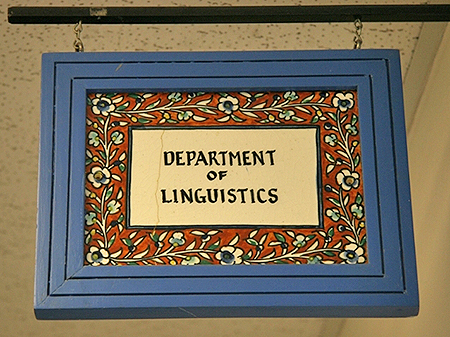
Linguistics ETDs
Publication Date
Fall 11-10-2016
Abstract
Speakers commonly re-purpose existing forms in the mental lexicon to create novel form-meaning. Contemporary evidence that such innovation processes have occurred historically is attested in varying degrees of polysemy in the mental lexicon. This dissertation considers speaker motivations underlying these innnovation processes historically. Strong synchronic relationships between frequency and degree of polysemy, on one hand, and frequency and lexical access, on the other hand, have traditionally been interpreted as evidence for the primacy of economic motivations in processes of lexical innovation. In contrast, the cognitive processes that most commonly facilitate innovation, metaphor and metonymy, have largely been described as processes motivated by expressiveness and not being misunderstood.
In order to assess the role of these competing motivations in processes of innovation, an idealized model of lexical change is presented, in which the corpus-distributional characteristics of forms used in innovation synchronically are considered independently from (1) the characteristics of polysemous forms synchronically, and (2) the distributional and diachronic consequences of the propagation of novel form-meaning in the speech community. Based on the corpus-distributional characteristics and degree of polysemy of approximately 20 thousand word forms in American English at three synchronic “points” in time (1810-1849, 1910-1929, and 1990-2009), three historical models are presented: a model of polysemy, a model of lexical innovation, and a model of propagation.
Results from the model of innovation demonstrate evidence of competing motivations (ie, economy, expressiveness, and not being misunderstood) in processes of innovation historically; importantly, model results demonstrate that the synchronic corpus-distributional characteristics of forms used in innovation are indeed distinct from the synchronic characteristics of polysemous word forms as described in the model of polysemy. Results from the model of propagation demonstrate the distributional consequences of successful propagation historically, and provide further evidence for the role of competing motivations historically. In sum, the studies presented in this dissertation demonstrate important roles for the speaker motivations underlying processes of metaphor and metonymy that have generally been overlooked by strictly synchronic approaches to lexical innovation.
Language
English
Keywords
Lexical innovation, Lexical change, Vector space models, Corpus linguistics, Historical linguistics, Psycholinguistics
Document Type
Dissertation
Degree Name
Linguistics
Level of Degree
Doctoral
Department Name
Department of Linguistics
First Committee Member (Chair)
William Croft
Second Committee Member
Jill Morford
Third Committee Member
Christian Koops
Fourth Committee Member
Richard File-Muriel
Recommended Citation
Timm, Jason Dr.. "Lexical variation, lexical innovation, and speaker motivations: a historical psycholinguistic approach." (2016). https://digitalrepository.unm.edu/ling_etds/45


